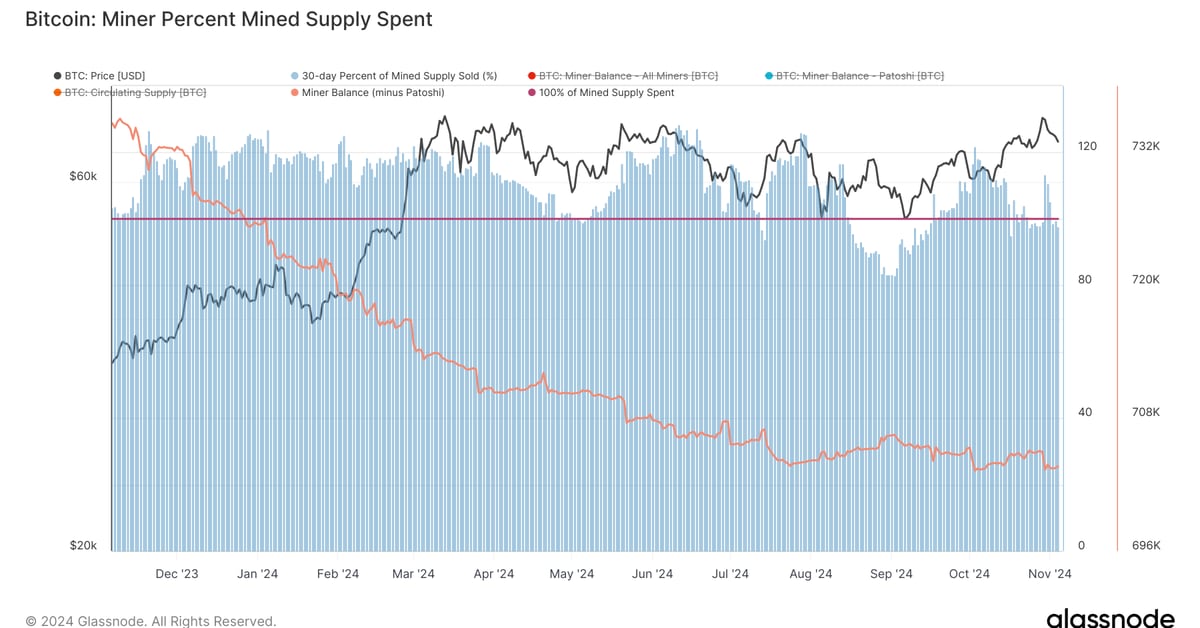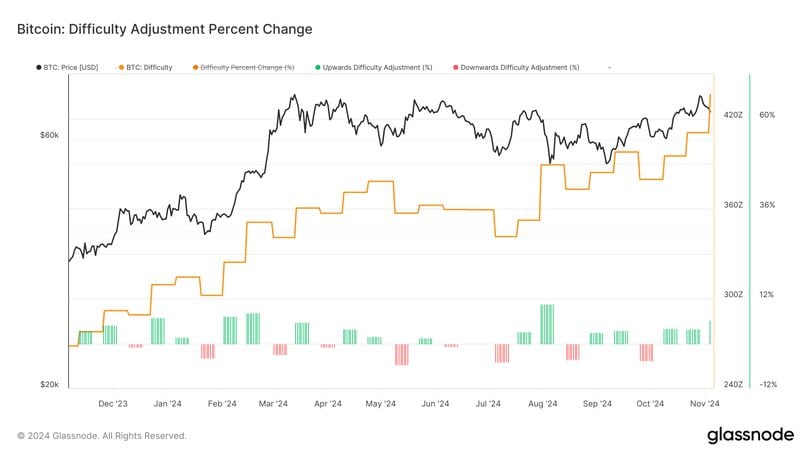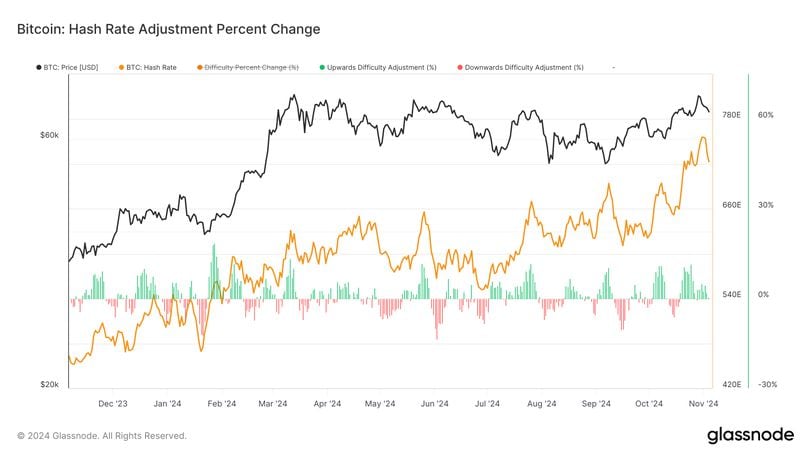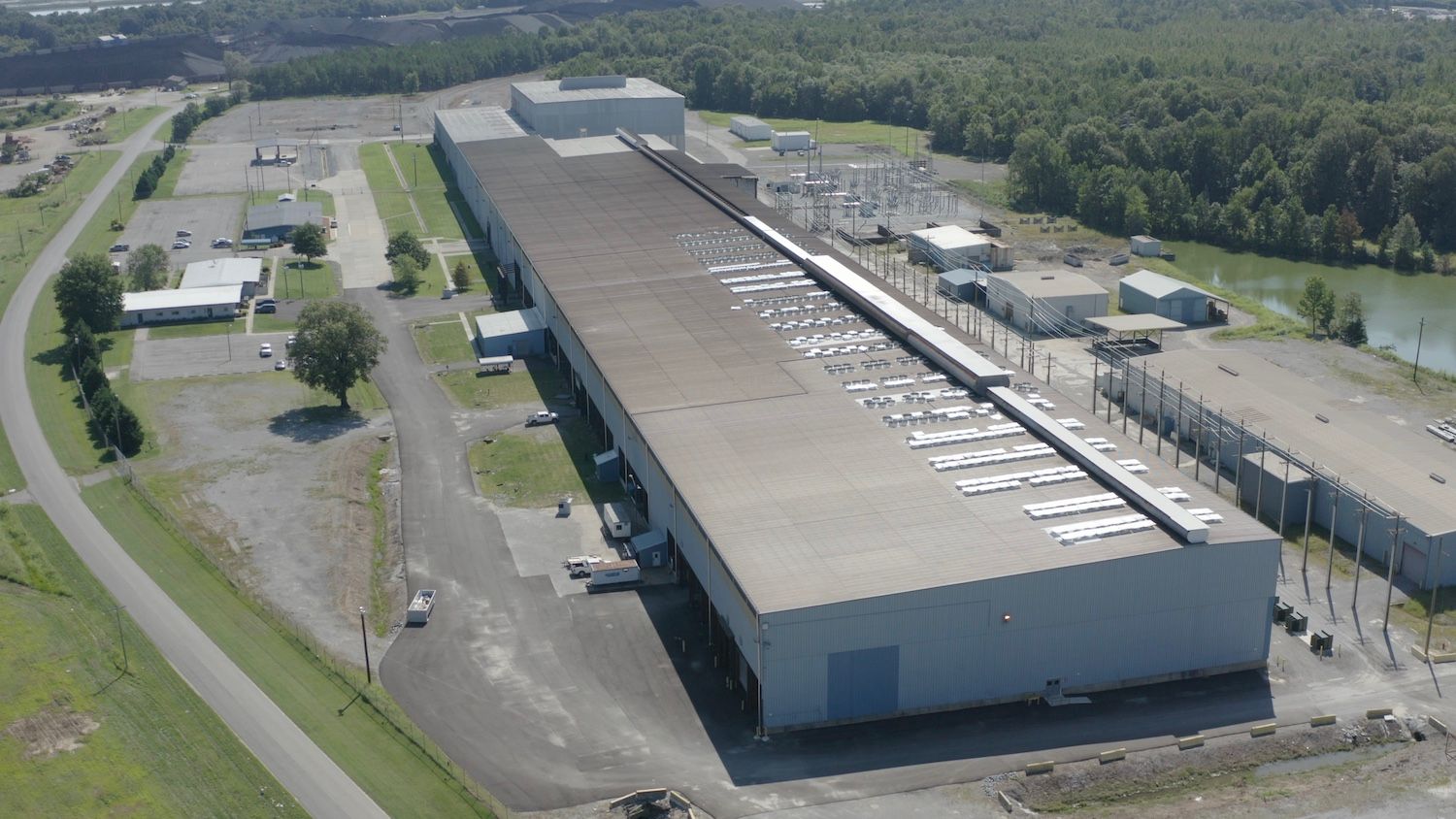Bitcoin Mining Difficulty Tops 100T for First Time, Piling Pressure on Small Miners

Bitcoin’s (BTC) mining difficulty hit an all-time high of 101.65 trillion (T) Monday, adding to pressure on smaller miners, who may not have as much cash available as their publicly traded rivals to keep their rigs going.
Mining difficulty measures how hard it is to discover new blocks on the Bitcoin blockchain. The network automatically adjusts every 2,016 blocks, or roughly every two weeks. This year, difficulty has adjusted 23 times, almost 60% of the time has seen a positive adjustment which makes the process harder. The higher the difficulty, the more strain on the mining industry to produce a block.
As mining is an extremely competitive and capital-intensive industry, smaller or private companies, whose access to cash may be more constrained than their publicly traded rivals, might need to sell their bitcoin production to fund operations.

Hashrate hits all-time high
Bitcoin’s hashrate hit a record high on a seven-day moving average of 755 EH/s last week. Hashrate is the computational power required to mine and process transactions on a proof-of-work blockchain. At the end of October, hashrate surged almost 12% in one day, one of the biggest rises year-to-date, according to Glassnode veri.

Miners are, on average, spending 100% of the total mined supply. In October, there was a brief period of miners retaining a portion of their bitcoin, adding to treasury reserves after a massive depletion in August and September.
In this current epoch, miners are mining, on average, 450 bitcoin a day. If the whole lot is sold, that amounts to roughly $31.5 million of sell-side pressure.
Overall, this shows that miners are currently in a relatively healthy spot. The less they spend on the mined supply, the less sell-side pressure occurs.





